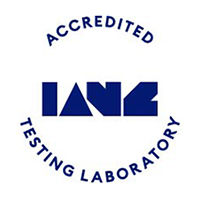For more than 70 years the static plate load test has been well known in international geotechnical practice. This test assesses two important stiffness parameters of the soil: the static soil modulus Es and the subgrade reaction modulus K. Additionally, by unloading and reloading the soil, it can assess the level of compaction achieved, similarly to the approach followed with nuclear density measurements.
The plate load test is extensively used in many countries (for example, Germany, UK, United States) for a range of different applications. Some of them are:
- Pavements and airfields: Assessment of compaction for base and subbase layers; assessment of compressibility of subgrade
- Ground treatment: Assessment of soil treatment effectiveness; for example lime stabilized soils or reinforced soils with geogrid
- Railways: Assessment of track ballast performance
- Landfills, abandoned mines or quarries, site re-developments: Assessment of the existing compaction level and expected future performance
However, for a number of reasons up until now, the static plate load test has not been well established in New Zealand practice. Such reasons potentially include:
- The required reaction mass; a heavy plant such as an excavator is required
- A relatively long test time
- The mobilization of relatively heavy equipment for performing the test (plates, jacks, strain gauges) and issues around their compatibility, calibration, accuracy and sensitivity
- Practical issues around monitoring three strain gages and the required level of expertise required in the field by technicians
- The time required for the interpretation of results and the disparity among different standards and available methods. The choice of method for estimating E and K is often at the discretion of the engineer. The resulting E and K can be quite variable when using different methods with the same data.
- Health and safety issues arising from the presence of the technician under the heavy plant recording during the test.
The development in recent years of the integrated static plate load tester has eliminated all of these issues listed above. This equipment uses the international standard DIN 18134:2012-04 which provides a robust mathematical algorithm with which E and K are both estimated in a consistent manner.
The advantages of the integrated plate load tester are:
- Direct estimation while on site of modulus Ev1 and reload modulus Ev2 with digital printout of results based on the DIN 18134:2012-04 mathematical algorithm; this saves a lot of interpretation time for the geotechnical engineer
- Fast and robust estimation for K based on the same DIN standard as above
- Assessment of soil compaction based on the ratio of Ev2/Ev1
- 20 minutes assembling time and 40 minutes typical testing time per point
- The testing equipment has a robust and compact design
- Elimination of three strain guages by using digital data acquisition through a measuring bridge with 300, 600 and 762mm plates
- By using 600 and 762mm plate sizes, coarser soil materials can be assessed
- Elimination of health and safety issues: after equipment assembly, no operator is located under the counterweight during the test
- Data transfer through USB interface to an analysis software, Bluetooth technology and GPS for accurate mapping of the measuring point
- Fully calibrated digital and mechanical equipment
- Interpretation software that supports results reporting in a straightforward manner
- Another advantage the test offers is that the plate sizes available have closely similar dimensions to the typical foundation geometries encountered in residential buildings described in NZS 3604. By applying proper stress levels under the plate, the test can successfully simulate the behavior of the actual foundation under design or assessment.
A sufficiently heavy plant is still required to provide the counter weight on site and this is selected based on the estimated level of applied stress.
The new integrated static plate load tester will now allow the engineer to choose an efficient option to measure the two important stiffness parameters discussed above.

